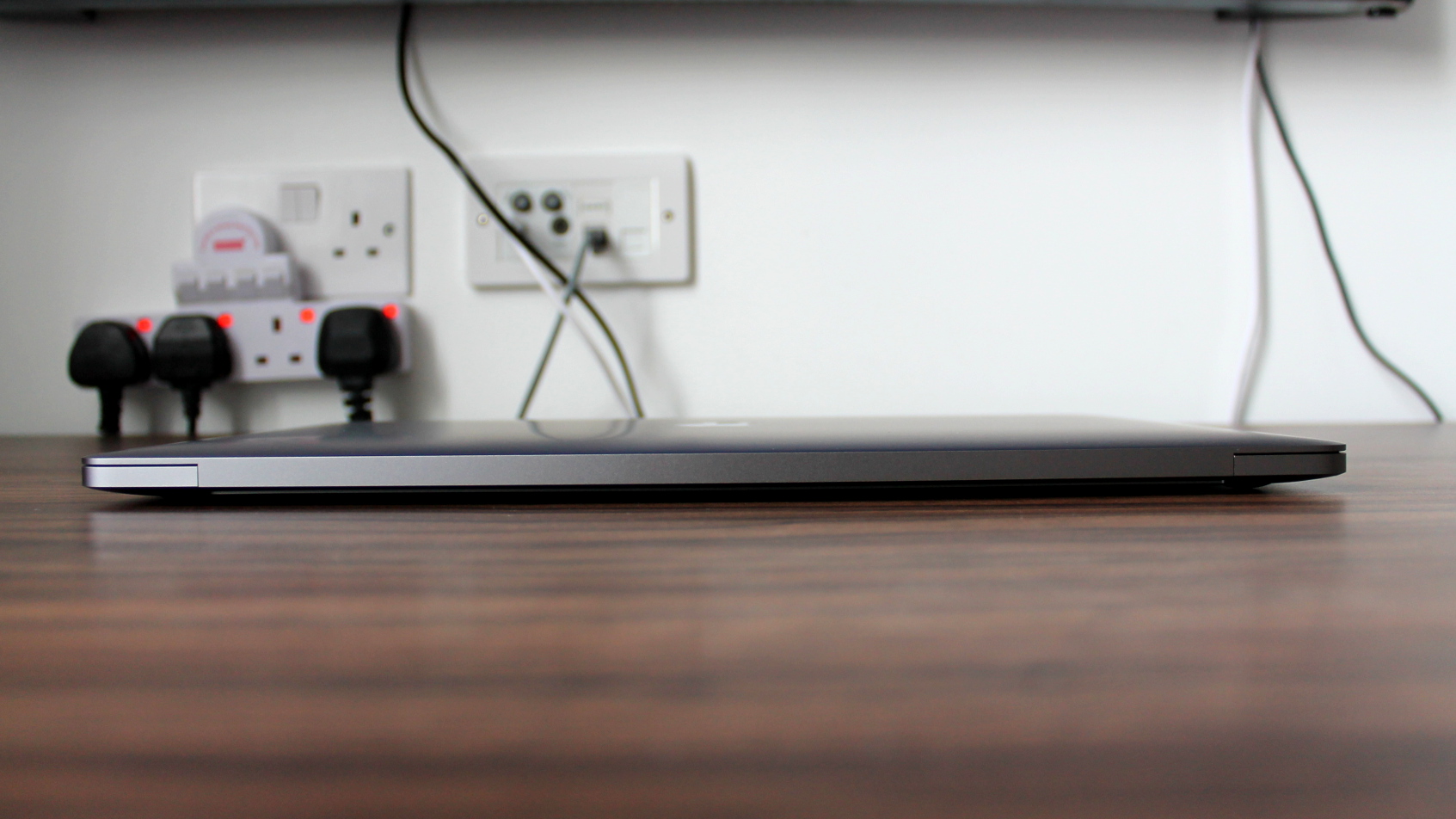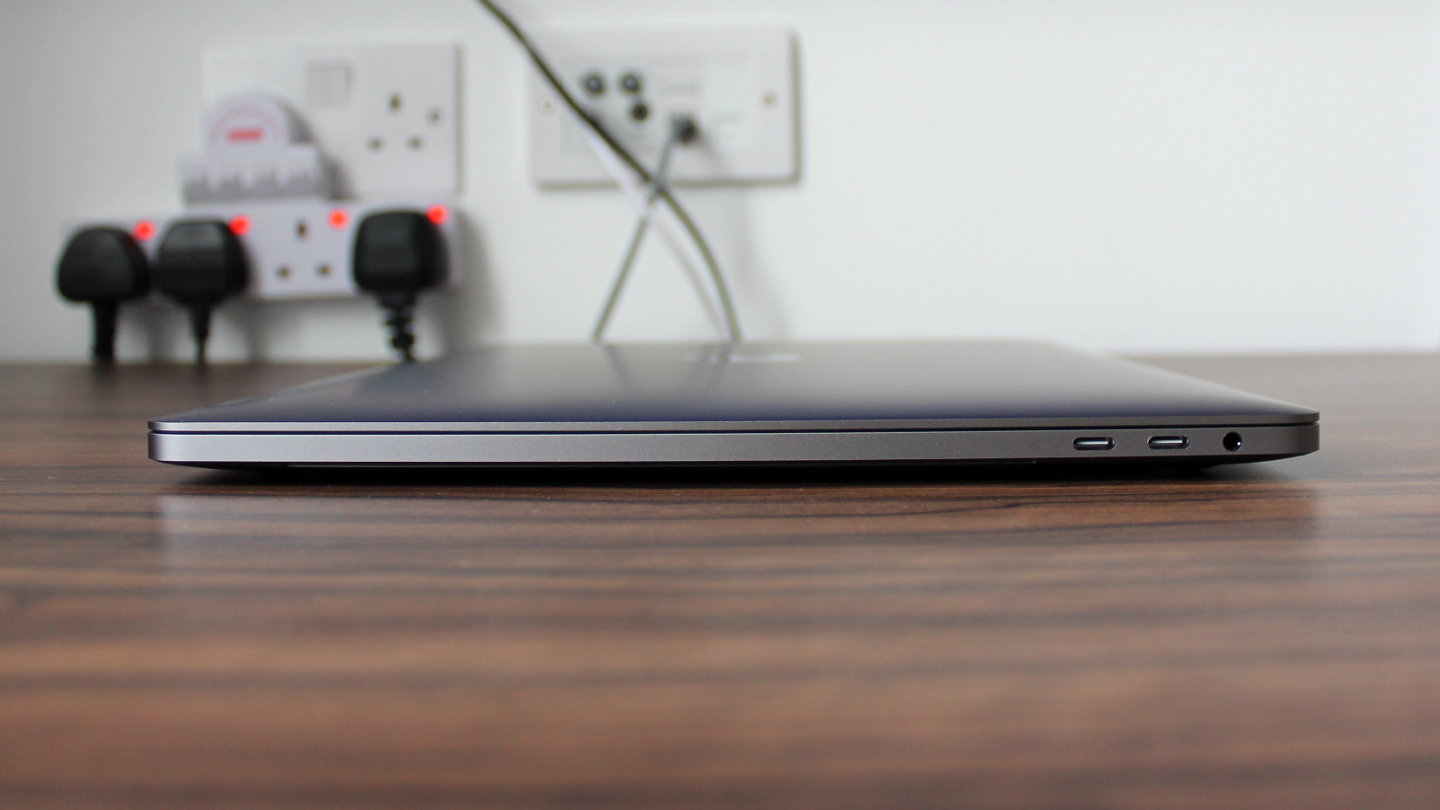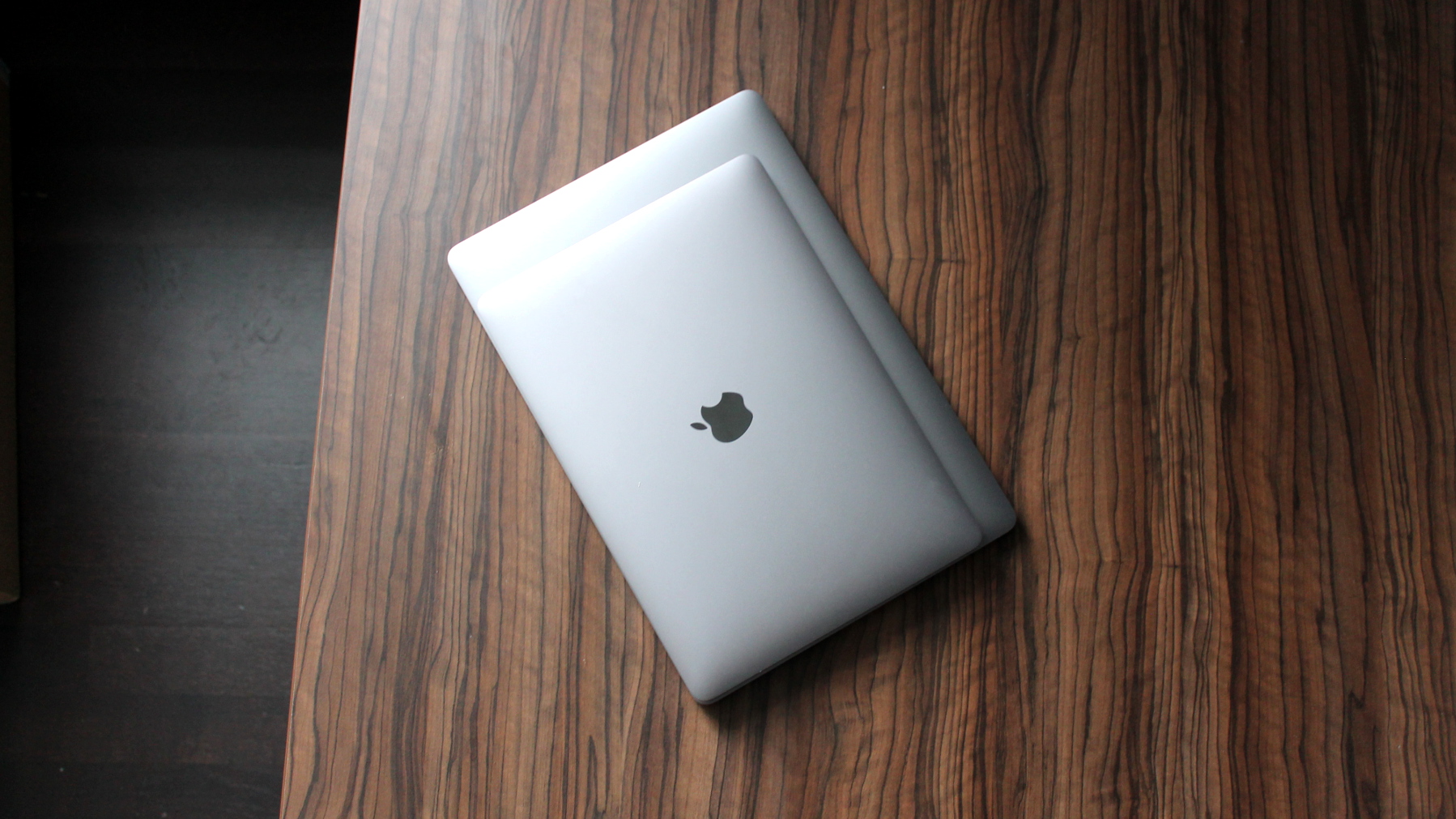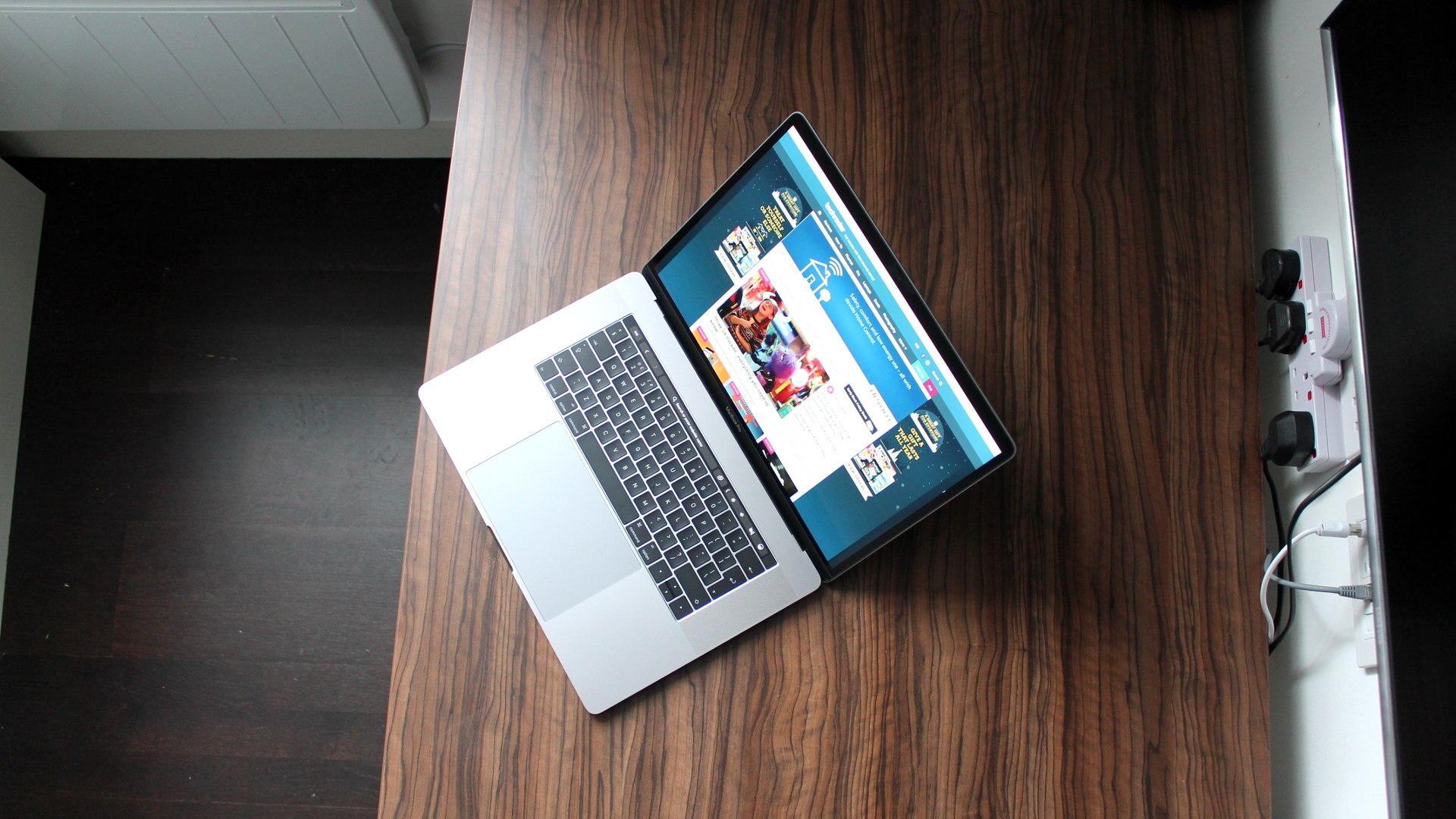Why you can trust TechRadar
The new MacBook makes big changes on the connectivity front compared to the previous generation. All of the ports on the old model – including traditional USB Type-A, mini DisplayPort and HDMI – have been replaced with four USB-C ports that support the transfer of data and video while charging the machine.
MagSafe, Apple's popular connection type for power, is no more – so you'll need to be especially careful not to wrap your leg around its charging cable.
The number of USB-C ports here isn't the issue. Having four of them alleviates some of the issues faced by the new 13-inch MacBook Pro sans-Touch Bar, which only has two. You can use two monitors with this MacBook while charging the machine, for example, without requiring a USB-C hub.
There's also less of a need to use USB-C dongles and adapters, and if you do, then having ports on both sides of the machine means there's less chance of them getting in each other's way. Still, you're going to need at least a couple of USB-C to USB-A adapters to hook up any legacy peripherals such as wired keyboards or mice.
The move to USB-C has been criticized by more vocal members of the Apple community as being too forward-thinking. There’s a certain irony in that, considering that Apple was accused of not innovating enough with its previous generation MacBooks, which placed a Force Touch trackpad at center stage.

In terms of dimensions, the new 15-inch MacBook is slimmer and more bag-friendly than ever before. It now measures 15.5mm (0.61 inches) in thickness compared to the previous generation model's 18mm (0.71 inches) – and you can you feel the difference most when clasping it in a single hand.
It's shed pounds too, dropping from 2.04kg (4.49 pounds) to 1.83kg (4.03 pounds), making it half a pound lighter than the XPS 15 with discrete graphics. It's nowhere near as weightless as the new 13-inch MacBook Pro, which is lighter still at 3 pounds, but the larger model's weight is much more palatable when you're carting it from A to B five times a week.

If you're a video editor, one of the huge reasons for buying the new MacBook is that you can hook it up to two 5K monitors at the same time to facilitate editing 4K video with timelines in full view.
The 15-inch MacBook, like the 13-inch model, has been equipped with excellent speakers, and it’s something that you’re going to notice the difference in when using the model in day-to-day use. Located to the left and right hand sides of the keyboard, they're louder than the ones on the 12-inch MacBook and provide full-bodied sound.

Performance and battery life
Here's how the 15-inch MacBook Pro performed in our suite of benchmark tests:
Xbench Overall: 266; CPU: 147
Cinebench R15: Would not run
Unigine Heaven 4.0 Medium Quality (1,680 x 1,050): 920; FPS: 36
Unigine Heaven 4.0 Ultra Quality (1,680 x 1,050): 593; FPS: 23.6
NovaBench: 1,175; Graphics: 154
Geekbench 3 Single Core: 4,024; Multi Core: 14,485
BlackMagic Disk Speed Read: 1,820 MB/s; Write: 70 fps
Batman: Arkham City (1,440 x 900, Medium): 70 fps
Tomb Raider (1,400 x 900, Medium): 73.5 fps
TechRadar battery test: 7 hours and 45 minutes
Apple is known for putting some of the fastest SSDs around into its MacBooks, and this year’s 15-inch model and 13-inch models are no exception. Here we have SSDs that can reach sequential read speeds of up to 1.8Gbps. Its speed can be felt during day-to-day tasks: booting is fast, as is opening and closing apps.
To test the MacBook's battery life, we downloaded a 1080p movie and played it on loop in VLC player until the battery has depleted. We kept the MacBook screen brightness and audio on 50%.
At 7 hours and 45 minutes, the MacBook easily has enough juice to get you through a couple of movies on a long trip.
As far as gaming is concerned, even the inclusion of AMD's Radeon 460 doesn't make it a more viable option than a gaming laptop with any of Nvidia's GTX Series 10 graphics chips.
That said, with 4GB of video memory, there's more than enough power to handle even modern titles with relative ease. We were able to play Tomb Raider and Batman: Arkham City well above that at the 900p resolution mark, so expect games to hover around that at golden 60 frames per second standard at 1080p depending on the game, obviously.
For better or worse, Apple's new 15-inch MacBook brings the innovation that many said was lacking from the previous generation model. If you're thinking of upgrading, the changes will force you to take action in ways that you might not be ready for – whether that's something as simple as ending a reliance on MagSafe to keep your laptop safe – to purchasing adapters for hooking up legacy peripherals.
We liked
In many ways, this 15-inch MacBook Pro is Apple's best big MacBook yet. Its display is now on a par with Apple's 5K Retina iMac, thanks to P3 color support, so professionals can edit on the move with confidence.
For pros and everyone else, that bright display almost makes it feel like Apple's put a whole new screen on its latest MacBook – everything looks that good on it.
And then there's that Touch Bar, which feels like it could prove mighty useful down the line with sufficient developer support. We saw the value it can bring after rewiring our brains in a few short weeks, by which time we were firing open tabs in Safari, lowering volume in a snap and correcting our typos without a grammar bar in sight.
The new MacBook improves in many other areas in small doses. Its speakers sound fuller, richer and louder; and an upgrade to Skylake processors gives you more than enough battery life to sit through a movie or two away from the outlet.
While its new Radeon 460 graphics chip may not trouble Nvidia's newer Pascal laptops retailing at similar price points, it means that you should be able to run modern games with fluid frame rates without any trouble.
The inclusion of four USB-C ports is a move that, although requiring a few changes here and there when it comes to hooking up legacy devices, provides four speedy connectivity options that would even let you hook up two 5K monitors if you wanted to.
We disliked
Are the new 15-inch MacBook Pro's benefits worth changing your entire workflow? The question is especially pertinent for creative professionals who may require a permanent SD card slot and USB-A ports more than a slighter and lighter chassis, improved display and row of touch-sensitive shortcuts above their keyboard.
Speaking of which, we would advise anybody who writes for a living to give the 15-inch model a spin before splashing their cash. It's hard to see the benefit of that massive trackpad when its palm detection fails every-freaking-three seconds while typing. The trackpad feels just the right size compared to the keyboard on the 13-inch model; on the 15-inch it feels excessive.
And there's no two ways around it: as the flagship model in Apple's MacBook Pro line-up, the 15-inch MacBook is expensive, which doesn't soften the blow when you have to shell out further for USB-C to USB-A converters and SD card adapters to plug in your old kit.
Final verdict
Like always, the 2016 version of the 15-inch MacBook Pro is a true desktop replacement. (So long as you bring along a few adapters this time around.)
You can rely on its big and gorgeous screen more than any other MacBook in history. The ability to hook up three 4K monitors or two 5K panels feels like a bonus more than anything – and even if you did that, you would still want to use the MacBook's screen for its incredible luminosity.
Should you upgrade from last year's MacBook Pro? If you're dead set against carrying around adapters, write constantly, can't abide by shallow keyboards and don't like retraining your brain to new function key layouts, then the answer is likely "no".
For everybody else, the new model is better-looking, more powerful, slimmer, richer-sounding, faster and more capable of gaming than ever before. It's just not the revolutionary model it could be down the line, once that huge trackpad has been reined in, the keyboard has plumped up a little and the TouchBar has reached its full potential. Oh, and once your collection of accessories graduates to USB-C.
- 1
- 2
Current page: Specifications, performance and verdict
Prev Page Introduction, design and Touch Bar
